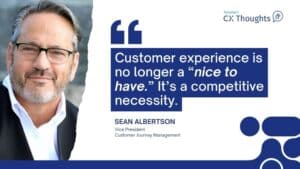
“Everyone can use our product/service!” If you’ve said anything resembling this sentence, this article is for you.
I know, you think that if you limit your market that you’re limiting your sales and  nothing could be further from the truth. You can’t be all things to all people and even if you could, you can’t sell and service all of them.
nothing could be further from the truth. You can’t be all things to all people and even if you could, you can’t sell and service all of them.
You will have to choose and I’m going to give you some creative ways of finding and choosing a target market.
If you have customers
If you already have some customers and it feels like they are “all over the place”, then you will have to see which of the customers you have are your ideal customers. I have a couple of interesting ways to do that:
- Profile your customer – The intention behind the profiling is to spot any patterns that you may not have noticed as you were accumulating customers. It might help to do this as a spreadsheet and use the following designations: Product/Service, Geography (local, out-of-state), Revenue, Industry, Products purchased, Customer source (advertising/referral) etc. Notice that these categories are demographic and psychographic segmentation in nature. You can make these categories anything that you wish.
- Note any patterns – You are looking for patterns. Take a look at your list and perhaps tag the ones you love working with the most. Now look and see each of your profile categories to see if they share any similarities; were they all referrals from the same person, maybe the same event triggered them to call you (this is a an overlooked differentiator and target market identifier).
- Dig deeper – If you’ve found some similarities, start digging into that specific pond or pool to see if there is a significant segment there. For example, one of my friends is a financial planner. After a few years of being in business she realized that a lot of her clients were women who were going through a divorce. Today, this is her target market and her brand. She is THE go-to planner for women going through divorce.
If you don’t have a lot of customers – starting out
- Check the competition – Look to see who your competitors are targeting and who they are ignoring. Let’s look at my example of the financial planner targeting women going through divorce. You could target MEN going through divorce. See what I mean?
- Match your benefits/outcomes to potential customers – Make a list of features, benefits and outcomes of your product or service and then describe the person or company who would most desire that specific benefit or outcome.
- Target a trigger – Think about the moment or event that would trigger someone to want or need your product or service and focus on that moment. We’ve already talked about divorce, but there are so many more, new baby, moving, getting married, becoming an empty nester, going on vacation — the possibilities are endless.
Don’t be afraid of choosing
The main thing in identifying a target market is to NOT be afraid of choosing. Remember, you are NOT ignoring other potential customers, you’re just not targeting them.
How can online surveys help you target your customers
I’ve told you all of this because QuestionPro’s online survey tool is a powerful partner in helping you identify and build a relationship with your ideal customer. If you haven’t done any segmentation, then you can use QuestionPro to identify some of these hard to ferret out psychographic attributes that your customers have.
You’ll want to do these surveys in phases because doing one large and long survey will not only overwhelm your customers, but will overwhelm you as well.
After you’ve done some of the work we’ve talked about here, you’ll have a good starting point with which to survey your customers.








[…] How to Find Your Target Market (questionpro.com) […]